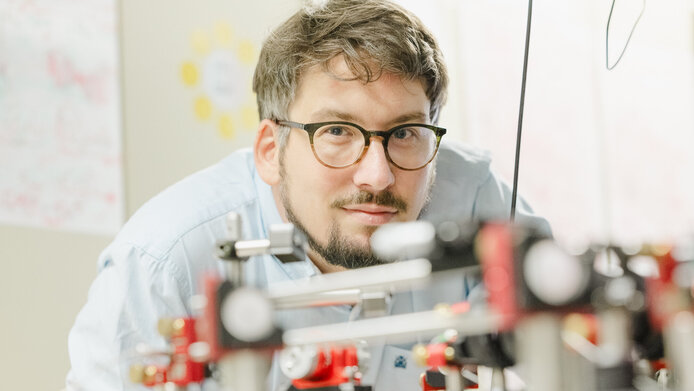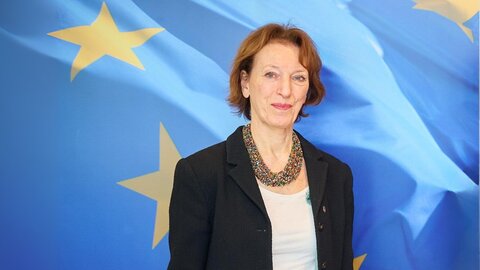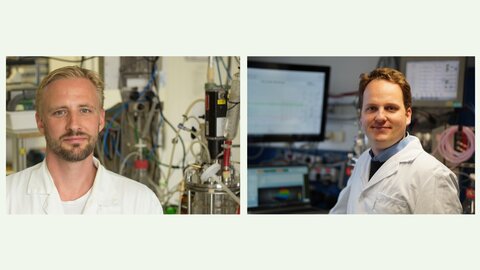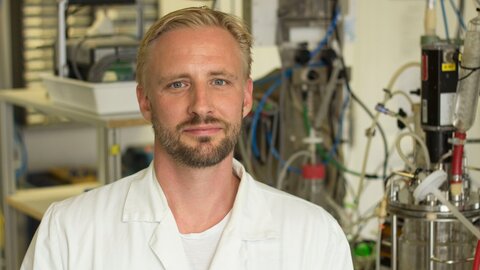Suspended quantum particles open up new perspectives

Mr. Delić, how do individual quantum systems differ from situations where several systems interact with each other?
Uroš Delić: For a long time, there was a belief in physics that it was sufficient to look at individual components in order to understand composite systems. But it turned out that the overall system begins to reveal new properties if you factor in interactions.
This always happens when a new level of complexity is taken into account, for example in transitioning from the simple systems of physics to chemistry and subsequently biology. These scientific fields emerged from the desire to understand the properties seen in the collective that do not exist in its individual components.
In other words, there are different rules for the whole than for its parts.
Delić: Exactly, for example Newton’s third law, which states that for every action in nature there is an equal and opposite reaction, doesn’t always apply. This concept of reciprocity, or reversibility, is strongly anchored in our minds, but we now know that it is often not true. If we look at a flock of birds, for example, the individual birds only see the birds in front of them, not the ones behind them.
This creates an asymmetry, which means that changes in the flock only occur from front to back, not the other way around. Another example from the world of humans is love, which is not always reciprocated. These kinds of collective, non-reciprocal effects occur frequently in nature, but they have not yet been studied at the quantum level.
Personal details
Uroš Delić is an experimental physicist. After completing degrees in physics and computer science in Belgrade, Serbia, Mr. Delić came to the University of Vienna, where he obtained his doctorate with distinction in 2019. This was followed by research stays, for example at the renowned Massachusetts Institute of Technology (MIT) in the US. Today, Mr. Delić researches and teaches at the University of Vienna and, as part of the QNONREC project, he will become a junior group leader at the Innsbruck Institute of Quantum Optics and Quantum Information of the Austrian Academy of Sciences. His research focuses on using light to keep nanoparticles in suspension and quantum properties of these nanoparticles.
Which non-reciprocal quantum effects are you planning to look at specifically?
Delić: In our experiments, we use nanoparticles made of glass that are around a hundred times smaller than the diameter of a human hair. That’s very small indeed, but for quantum systems it’s enormous. We can use lasers to keep these nanospheres suspended in a vacuum chamber. While this method has been around for some time, it was only recently that we were able to demonstrate that the nanoparticles actually move according to the laws of quantum mechanics.
If we now put two of these particles close to each other, they begin to interact via the scattered light. At the moment, we are still observing these interactions from the perspective of classical physics, but now we want to observe them from the quantum perspective as well. Interplay with the environment, however, eliminates the reciprocal nature of these interactions, raising the question as to whether we can entangle two, or more, nanoparticles with each other at all under these conditions.
You need to be able to precisely control the movement of the particles to be successful. How do you plan to achieve that?
Delić: We use a method that we have developed in recent years, where we split a laser beam using a special acousto-optical component. The device is controlled by the computer using sound signals, like when you play music. If we play two different notes, for example, the laser beam is split into two parts which can hold two particles. However, we can also use this method for a larger number of particles.
If we program these sounds just right, we can control the interaction between the nanoparticles with precision. For example, pairs of particles have a common resonance frequency. Just like a tuning fork that vibrates when you hit its resonance frequency, two nanospheres also begin to interact strongly with each other when you hit the right note.
What are your biggest challenges?
Delić: In theory, we can switch interactions on and off. But actually writing the programs that will achieve the necessary precision and expanding the process to more than two nanoparticles will be a central challenge in this project.
We are also planning to use an optical resonator to be able to detect the interaction with even greater precision. On the one hand, we will use methods from the field of nuclear physics, but we also need to develop new theoretical tools together with our partners. In this sense, the project is very interdisciplinary.
What does the START Award mean for your project?
Delić: For the first time, we plan to use non-reciprocity as a resource to generate collective quantum states. The START Award will enable us to carry out some of the initial experiments in this field.
About the project
While the quantum physics of individual, well-isolated systems is well understood, many-particle systems have puzzled physicists, despite representing the norm in the world outside of physics labs. The QNONREC project aims to investigate interacting quantum systems by initiating interaction among several suspended nanoparticles, whose behavior can be precisely controlled and read out using lasers and optical resonators.
The FWF START Award
The START program of the Austrian Science Fund (FWF) is aimed at outstanding young researchers, giving them the opportunity to plan their research in the long term and with a high degree of financial security. It is endowed with up to €1.2 million and is one of Austria’s most prestigious and most highly endowed awards alongside the FWF Wittgenstein Award.





